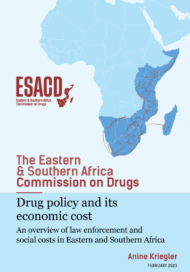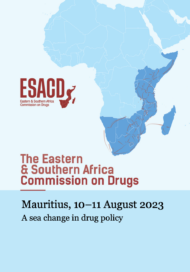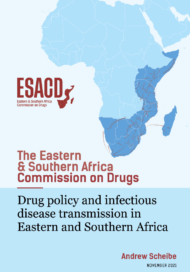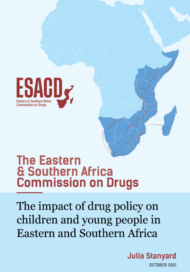Posted on 01 Feb 2023
This paper provides an overview and analysis of the economic cost of illegal drug use in Eastern and Southern Africa (ESA). It collates the limited available information from 11 countries in the region to describe features of drug-related government expenditures in the spheres of criminal justice and health.
It gives an indication of the extent of police activity and prison resources dedicated to the enforcement of drug laws, of the health costs associated with drugs under the dominant policy approach and of the support for harm reduction programmes. These are broadly compared to show that revising these relative resource priorities might offer large direct budgetary dividends.
Key points:
- All countries in ESA continue to concentrate their direct drug-related expenditures in the criminal justice system. Policing and prison expenditures for drug law enforcement are large.
- Much of this activity has little prospect of disrupting drug supply and may even increase harms and costs in the longer term.
- n Much of this activity has little prospect of disrupting drug supply and may even increase harms and costs in the longer term.
- Although there is strong evidence that harm reduction measures can reduce drug-related harms and costs, these receive little attention and funding.
- Many costs typically ascribed to drugs are the costs of a certain approach to drug policy. This is subject to change.
- There is too little of the necessary information available for rigorous analysis or to draw firm conclusions. Governments and other role-players must invest in data collection to make drug policy decision-making and evaluation possible.




